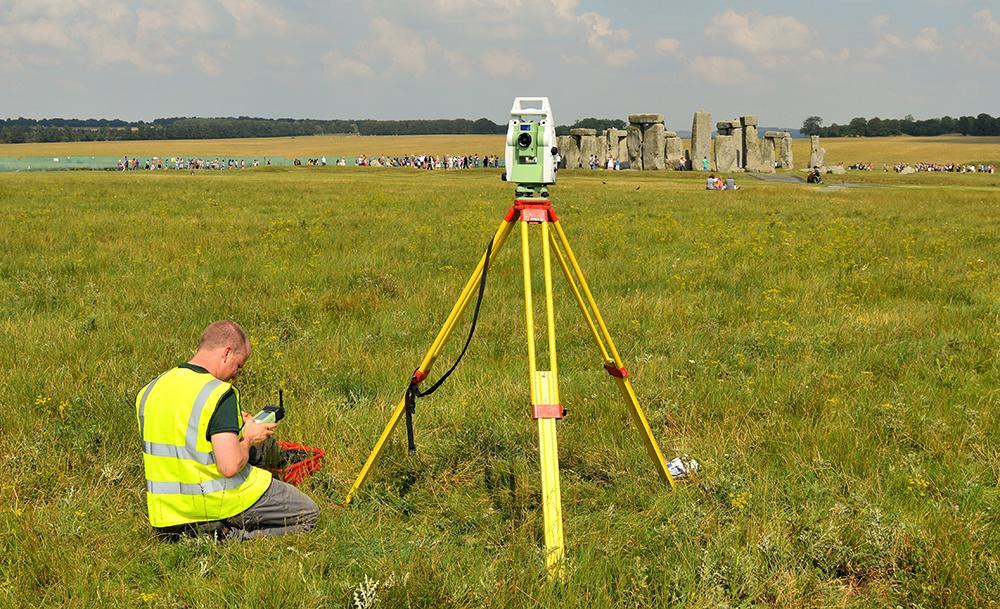Stonehenge Hidden Landscapes
Stonehenge has been the subject of archaeological enquiry and exploration for hundreds of years and yet much of that enquiry has been centred on the monument itself. The Stonehenge Hidden Landscapes project literally turned its back on the stones and realised that they stood in a vast area that had to provide context for the monument.

Because previous enquiry had focused on known sites, understanding the unsurveyed landscape and the ability of national curators to effectively manage this internationally important landscape was severely limited. The team scaled up its approach in an unprecedented way to cover an area of 26.2 square kilometres and applied techniques that it had developed over a number of years. These included GPS-located collection of geophysical data, allowing for large-scale, non-invasive motorised collection of data capable of being applied on a large scale.
Professor Chris Gaffney said: “The team could view the landscape as an undivided, three-dimensional space. It led to the discovery of huge, previously unknown structures and features. These included the massive pits within the greater Cursus, a series of complex timber monuments underneath existing sites, the identification of a vast Late Neolithic monument predating the bank and ditch of the Durrington Walls super-henge, and the shaft encirclement of that henge.
“This led directly to modified interpretations of the known monuments within the context of the newly discovered features and structures, together with new theories of the structure of the landscape. The significance of the discoveries is of considerable international importance.”

The research has informed the management of the landscape, particularly in relation to planning. This has included many new entries in the Historic Environment Record and the register of Scheduled Ancient Monuments. The National Trust has stated that the project has helped in the overall management of the property and there is significant use of its ongoing discoveries by the Trust to ensure positive engagement with other bodies and institutions, such as the Army, which has relocated facilities immediately north of the site. Furthermore, the work of the SHLP has influenced the National Trust to significantly alter the way in which it investigates the whole of its estate using prospecting methods.
The importance of the research resulted in Highways England purchasing the project’s data in advance of publication to develop the archaeological evaluation and mitigation strategies for the A303 tunnel scheme. The significance of the research findings radically changed the response of influential national and international stakeholders.
The continued public interest in the discoveries made by the project has been both sustained and global. A two-part BBC 2 mini-series about the Stonehenge Hidden Landscapes Project was broadcast several times and was seen by 7.6 million people in the UK. It was then screened by broadcasters in Spain, Italy, Greece, Cyprus, Bulgaria, Russia, Poland, Finland, Norway, China, Hong Kong, Thailand, Australia, and the USA. More than 300 newspapers and other news outlets covered the discovery of Durrington Walls, reaching people all over the world, from China, Korea and Japan to Brazil, Argentina, Mexico, Greece, Turkey, Russia, Israel, Australia, and the USA. The worldwide exposure has been such that, before the pandemic curtailed travel, three quarters of the site’s visitors were international.
The National Trust and English Heritage now present an enriched interpretation to visitors. The Stonehenge Visitor Centre uses the project’s information to tell the landscape story. More than nine million visitors have experienced these displays. The project research findings, featured on the English Heritage website, has attracted over one million views and project discoveries, such as the Cursus pits, Amesbury 50 and the palisaded enclosure at Durrington Walls, feature prominently in landscape tours.
